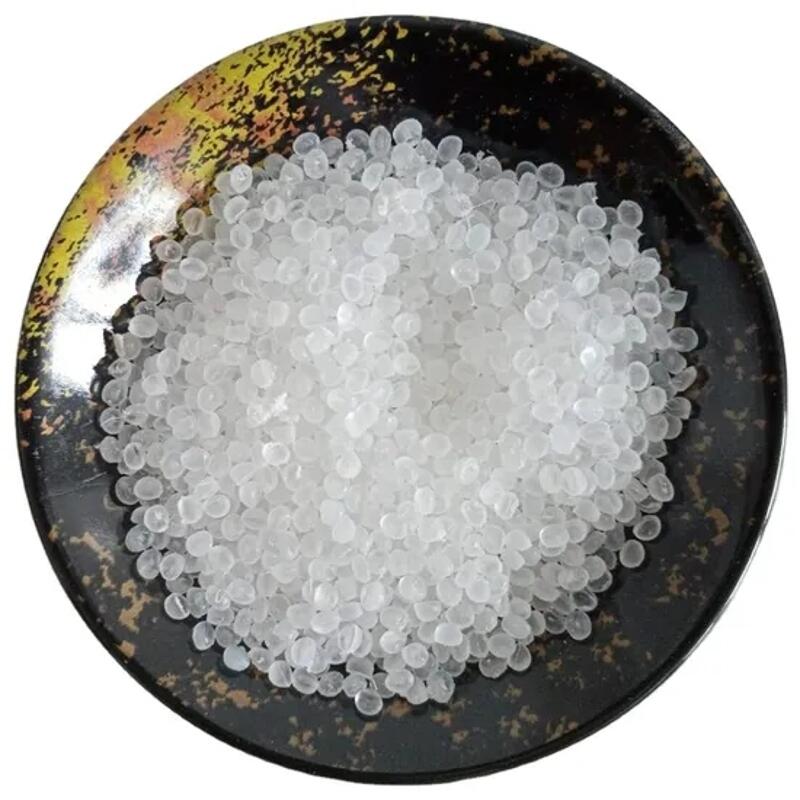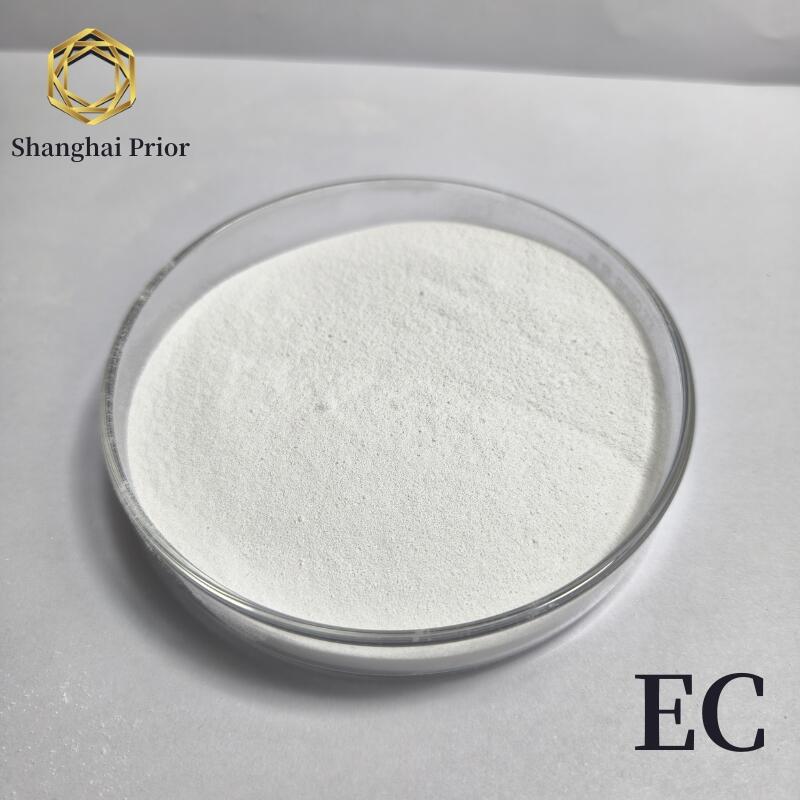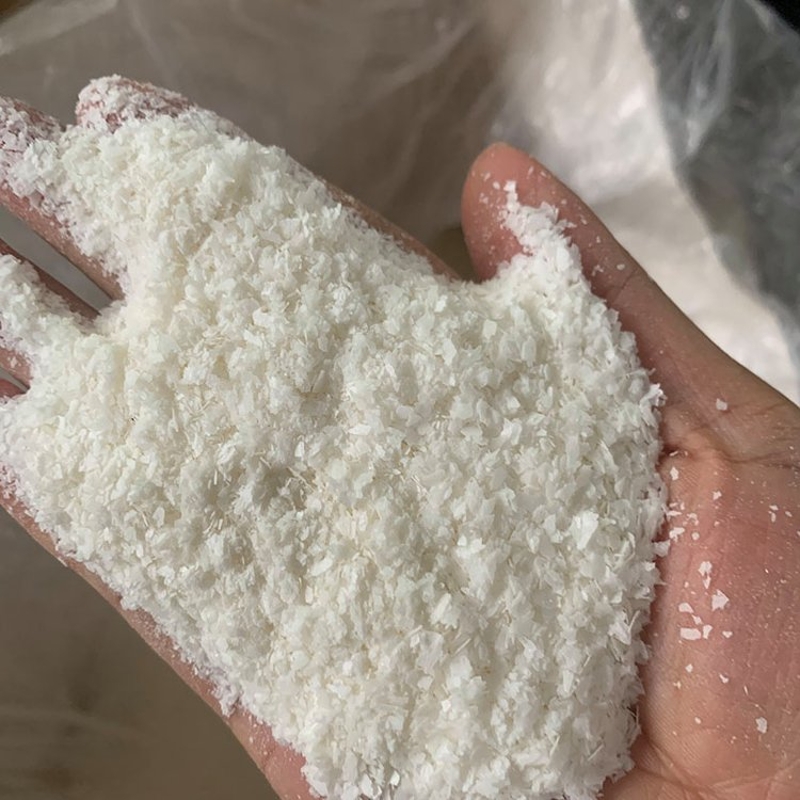-
Categories
-
Pharmaceutical Intermediates
-
Active Pharmaceutical Ingredients
-
Food Additives
- Industrial Coatings
- Agrochemicals
- Dyes and Pigments
- Surfactant
- Flavors and Fragrances
- Chemical Reagents
- Catalyst and Auxiliary
- Natural Products
- Inorganic Chemistry
-
Organic Chemistry
-
Biochemical Engineering
- Analytical Chemistry
-
Cosmetic Ingredient
- Water Treatment Chemical
-
Pharmaceutical Intermediates
Promotion
ECHEMI Mall
Wholesale
Weekly Price
Exhibition
News
-
Trade Service
0 Introduction
As a polymer material, silicone resin is widely used
because of its excellent heat resistance, cold resistance, radiation resistance, hydrophobicity, stain resistance, chemical corrosion resistance and other special properties.
However, pure silicone resin has the disadvantages of long curing time, low coating adhesion at high temperature, and low mechanical strength, which limits its application [1].
Since the molecular structure of silicone resins still retains active groups such as hydroxyl groups, this provides more possibilities for the modification of silicone resins [2] coating in-line coatingol.
com
.
As the main film-forming substance of silicone resin coatings, silicone resin has received widespread attention in its modification [3].
This article mainly reviews the research progress of modified silicone resins in the fields of high-temperature resistant coatings, wear-resistant coatings and antifouling coatings [4-6].
1 High temperature resistant coatings
The difference with organic polymers is that the bond energy of Si-O bonds in silicone resins is higher than that of C-C bonds in ordinary organic polymers, and silicon atoms and oxygen atoms form d-pπ bonds, so silicone resins have good thermal stability [7-8].
1.
1 Epoxy resin modified silicone resin
Epoxy-modified silicone resin is grafted condensation reaction with polysiloxane active group through epoxy group and hydroxyl group of epoxy resin, so the modified epoxy/silicone coating has good stability and has the advantages of epoxy resin and silicone resin [9].
For epoxy-modified silicone resins, Sun Zhenning et al.
[10] prepared epoxy-modified silicone polymers and applied the modified resin to
the anti-splash coating of engine blades.
Through Fourier infrared spectroscopy (FTIR) analysis, the hydroxyl group in the silicone resin reacted successfully with the epoxy group, indicating that the epoxy resin was chemically modified for the silicone
.
Through thermogravimetric analysis (TG), it is known that with the increase of hydroxyl silicone oil content in the system, the better the thermal stability of the modified polymer, the better it can be applied to
the anti-splash coating of the blade.
1.
2 Inorganic filler modified silicone resin
When the silicone resin branch chain contains a phenyl group, the content can affect the heat resistance of the coating, because the electron-rich cloud in the phenyl group can interact with the pigment filler and substrate to enhance the adhesion of the coating [11].
Therefore, the use of inorganic fillers to modify the filling of silicone resin film forming can give the coating better performance
.
Ding Chao et al.
[12] used silicone resin as film-forming resin, added aluminum, silver paste, mica powder and other temperature-resistant fillers, and developed a one-component high-temperature anti-corrosion coating
that can be used for a long time at 500 °C.
The flake structure of mica powder itself is conducive to improving the temperature resistance of the coating
.
The experiment results show that the amount of aluminum silver paste in the formula should be controlled at 10%~15%, and the amount of mica powder should be controlled at 12%~15%, and the silicone high-temperature resistant coating with this content ratio can show excellent thermal stability
.
1.
3 POSS (polyhedral oligosilsesquioxane) modified silicone resin
The addition of nano-SiO2 [13], carbon nanotubes [14], clay [15] and other nanoparticles [16] can improve the thermal and mechanical properties of polymers [16~17].
However, due to the agglomeration of nanoparticles, it is difficult to achieve nanometer dispersion
by mechanical blending.
As a unique organic/inorganic nanomaterial, POSS has non-reactive groups that can improve compatibility with silicone resins, and reactive groups can achieve chemical bonding with silicones, which can solve this problem
well.
LiuY R et al.
[18] successfully synthesized methyl silicone/POSS composites
with higher decomposition temperatures by mixing functionalized trisiloxobutyl POSS with hydroxylated methyl silicone resin.
Yang Z [19] synthesized a series of silicone resins containing silicone benzene units into the POSS backbone, which improved the thermal stability
of silicone resins.
Yao X et al.
[20] synthesized three polyhedral oligosilsesquioxanes, which significantly improved the thermal stability by adding POSS to the silicone resin, and concluded that the thermal stability of aminopropyl POSS modified silicone resin was most significantly improved, and the decomposition temperature was increased by nearly 45°C
compared with pure silicone resin 。 In addition, Yao X et al.
also studied the thermal decomposition mechanism of silicone resins with different POSS, and showed through chemical simulations that hydrogen bonds were formed between POSS and silicone resins, which greatly improved the thermal stability of silicone resins, and obtained a unique mode to improve thermal stability: hydrogen bonds were formed to prevent the movement
of resin chains.
Kong Guoqiang et al.
[21] modified POSS containing silanol to improve the thermal stability
of silicone resins.
They studied the effects of different POSS addition amounts and methods on the thermal properties of silicone resins, and the results showed that with the increase of trisilyl phenyl (P–POSS) addition, the thermal properties of modified silicone resins first increased and then decreased
.
When the mass fraction of P–POSS is 5%, modified silicone resins
with good thermal properties can be obtained by heating reaction.
In addition, silicone modified organic resins have also made new progress
.
Yang Fei et al.
[22] prepared silicone resin by siloxane monomer and silica sol, which was used to modify polyester, and obtained silicone-silica sol/polyester composite resin
.
Through TG analysis, it is known that the higher the content of silicone resin, the better
the thermal stability of the composite resin.
In addition, the amount of silicone resin also has a very important impact on the mechanical properties and hardness of the composite paint film: the increase of silicone resin increases the hardness of the paint film and improves adhesion, but at the same time reduces its flexibility
.
Chen Yanan [23] used silica sol modified epoxy resin to prepare high-performance silicon modified epoxy composite resin
.
With SEM characterization, flocculation
occurs when the system is under alkaline conditions.
FT-IR analysis showed that the active hydroxyl group in the silica sol successfully reacted
with the epoxy group.
Through a series of performance tests, it is shown that the emulsion has good thermal stability
.
When the silica sol content is 10%, the composite resin has the best performance
.
2 Abrasion resistant coatings
There are many modification methods for silicone resins, such as changing the organic groups on the side chain, grafting the main chain, etc.
, which can improve the scratch resistance of silicone resin coatings [24].
Nowadays, the use of nanotechnology for modification has a good development prospect.
The preparation of resin-based nanocomposite coatings helps to improve the wear resistance
of coatings.
On the one hand, the resin matrix can be modified, and the interaction between resin and nanoparticles changes the thermodynamic properties of the system, and then a special ordered structure can be formed, which can improve the wear resistance of the coating by changing the aggregate structure of the polymer chain, increasing the atomic force between molecules, binding the chain movement, and reducing wear [25].
On the other hand, the introduction of nanofillers in the coating system can improve the mechanical strength and surface hardness of the coating [26].
To improve the wear resistance of silicone resin, Huang Chanjuan et al.
[27] studied a silicone resin-based nano-TiB2-TiC composite coating to improve the surface structure of cotton fabrics, so as to achieve excellent wear resistance on the surface of
cotton fabrics.
Through orthogonal experiments, it is known that when the ratio of nanofiller TiB2 to TiC is 1:2 and the ratio of TiB2-TiC is 4%, the wear resistance of the coating is the best
.
And the wear rate of the coating film decreases
with the increase of the coating amount.
It can be seen by scanning electron microscopy (SEM) that the modified coating film has excellent wear resistance, and it still has certain hydrophobicity
after 1500 frictions.
In addition to silicone resins as substrates, silicones are also widely used
as reinforcements.
Researchers from Ningbo Institute of Materials Technology and Engineering, Chinese Academy of Sciences [28] prepared superhydrophobic POSS-GO nanosheets by chemically modifying grafted polyhedral oligosilanes on the surface of graphene oxide (GO), and added the prepared POSS-GO to epoxy resin to study its corrosion protection and tribological properties
in simulated seawater.
The results show that after POSS-GO strengthening, the hardness, bonding strength and toughness of epoxy coating are improved
to varying degrees.
After immersion in simulated seawater for 150 days, the 0.
5% POSS-GO reinforced epoxy composite coating had the lowest
friction coefficient and wear rate in simulated seawater.
In addition to the application of nanotechnology, new progress
has also been made in silicone resin-modified organic resin coatings.
Zhang Quanwei et al.
[29] prepared silicone resin-modified high hydroxyl value toughness polyester resin
.
The results show that when the ratio of polyester to silicone resin is 2:1, the mechanical properties of the modified paint film are good and the wear resistance is the best
.
Taking the wear-resistant resin as the base, silicon carbide and the like as the wear-resistant filler, molybdenum disulfide and the like as the lubrication filler, a wear-resistant coating with excellent mechanical properties and good corrosion resistance was prepared, when m (silicon carbide): m (molybdenum disulfide) is 5:2, and the Yan-base ratio is 0.
7:1.
0, the wear resistance of the coating film is the best
.
3 Antifouling coatings
Silicone resins can have excellent antifouling properties also depend on their unique chemical structure, silicone resins contain a large amount of silicon hydroxyl groups, in the film forming process, silicon hydroxyl dehydration condensation into a huge network structure, and then form an extremely dense paint film
.
This is also the reason why
the surface energy of silicone paint film is low and the surface tension is small.
The modified silicone resin surface contact angle can reach 150°, which can make the coating have excellent hydrophobicity and theoretically excellent antifouling [30-31].
3.
1 Polymer-modified silicone resins
Unlike silicone antifouling coatings, other polymer-based antifouling coatings also have unique antifouling properties, so with the help of polysiloxane's active group and other polymer resins reacting with other polymer resins, polysiloxane resins can maintain a stable backbone structure and grafted other functional groups on their branch chains, thereby ensuring antifouling and improving existing defects [5].
Xia Jie [32] prepared the modified silicone resin antifouling coating by polyurethane modified hydroxypropyl silicone oil, and through FT-IR analysis, the system contained the telescopic vibration peak containing NH and the telescopic vibration peak of Si-O-Si, which proved that polyurethane-modified silicone resin
had been successfully prepared.
Through DSC analysis, the introduction of hydroxypropyl silicone oil increases the compliance of the resin chain, so the glass transition temperature decreases
.
The results show that when the dosage of hydroxypropyl silicone oil (DY) increases, the water absorption rate of the resin decreases and the water resistance is enhanced
.
Through the adhesion experiment of diatoms in the laboratory, the amount of polyurethane-modified silicone resin adhesion is small, indicating that it has good antifouling ability
.
3.
2 Nanoparticle modified silicone resin
The dispersion of nanoscale filler particles in the segments of the silicone polymer [33] by a high-speed blender can improve compatibility with silicone resins and improve the antifouling properties of the coating [34].
Among them, the most widely used is nano-silica, because it has a similar molecular structure to silicone materials (the main chain contains Si-O-Si bonds) [35], so Xuanbo et al.
[36] synthesized silicone-modified acrylic resin by radical polymerization, and further added nano-SiO2 and nano-TiO2 to
silicone-modified acrylic resin.
Through FT-IR analysis, the silicon-modified acrylic resin contained characteristic peaks such as SiO and Si-C, indicating that it had successfully participated in the reaction
.
Through the contact angle analysis of the paint film, when the ratio of nano SiO2 and nano TiO2 was 1:1 and the content was 16%, the contact angle was the largest, which was 149°, indicating that the composite paint film had good hydrophobicity
.
For the mechanical properties of the paint film, the introduction of nanoparticles makes the hardness of the paint film as high as 6H
.
Through the salt spray performance test, the paint film containing nanoparticles has excellent corrosion resistance
.
Qi Kaiyue et al.
[37] synthesized silicone-modified acrylic resin using vinyl trimethoxysilane and acrylic monomer as raw materials, and added nanosilica to
silicone-modified acrylic resin.
Also through FTIR analysis, the double bond of the acrylate was opened and successfully grafted into the main chain of
the silicone resin.
This paper focuses on the effect of nano-SiO2 on the performance of composite resin system: the increase of nano-SiO2 can increase the contact angle of the paint film and improve the water resistance of the paint film, but the excessive silicon content reduces the performance of the paint film, which may be due to the agglomeration
of nanoparticles.
When the content of epoxy resin increases, the adhesion of the composite resin increases and the hardness increases to 6H
, but the increase of epoxy resin reduces the water resistance of the paint film.
4 Conclusion
For the modification of silicone resins, in addition to the modification of organic polymers, the application of nanotechnology has also become a research hotspot
.
However, because nanoparticles are easy to agglomerate, how to uniformly disperse them in the silicone resin matrix is the key
to the application of nanomaterials in coatings.
Modified silicone resin coatings are used in many industrial fields
because of their excellent resistance to high temperatures, abrasion and fouling.
Coupled with the improvement of people's requirements for interior decoration, modified silicone resin coatings have also been widely developed in the field of building decoration and decoration, and have good application prospects
.
In addition, in today's increasingly environmental awareness, modified silicone resin coatings can better reflect the concept of environmental protection and energy saving, and will move
towards greening.







